Bookworm
Published in Book Reviews, General, Issue 5 (Sept/Oct 2011), Reviews, Volume 19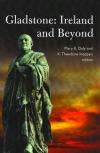 In the present climate of cynicism, where the stock of politicians is only marginally above that of bankers, property developers and paedophile priests, it is hard to believe that not so long ago images of political figures—Tone, Emmett, O’Connell, Parnell, etc.—regularly featured on the walls of Irish homes. It is equally hard to believe that one of the commonest of these political icons was a British prime minister, William Ewart Gladstone. To find out why, readers could usefully dip into Gladstone: Ireland and beyond (Four Courts Press, 208pp, €40 hb, ISBN 9781846822988), a collection of essays edited by Mary E. Daly and K. Theodore Hoppen, which, as the title suggests, places Gladstone in the broader context of the United Kingdom and the British Empire.The 150th anniversary of the Great Hunger inspired a huge wave of scholarship—from Cormac Ó Gráda, James S. Donnelly, Joel Mokyr, Christine Kinealy and Peter Gray, to name but a few. While this has abated in more recent years, the focus has shifted to local studies of the Famine. The latest in that genre is William Henry’s Famine: Galway’s darkest years (Mercier Press, 254pp, €14.99 pb, ISBN 9781856357531). While this has been a welcome development, there was always the
In the present climate of cynicism, where the stock of politicians is only marginally above that of bankers, property developers and paedophile priests, it is hard to believe that not so long ago images of political figures—Tone, Emmett, O’Connell, Parnell, etc.—regularly featured on the walls of Irish homes. It is equally hard to believe that one of the commonest of these political icons was a British prime minister, William Ewart Gladstone. To find out why, readers could usefully dip into Gladstone: Ireland and beyond (Four Courts Press, 208pp, €40 hb, ISBN 9781846822988), a collection of essays edited by Mary E. Daly and K. Theodore Hoppen, which, as the title suggests, places Gladstone in the broader context of the United Kingdom and the British Empire.The 150th anniversary of the Great Hunger inspired a huge wave of scholarship—from Cormac Ó Gráda, James S. Donnelly, Joel Mokyr, Christine Kinealy and Peter Gray, to name but a few. While this has abated in more recent years, the focus has shifted to local studies of the Famine. The latest in that genre is William Henry’s Famine: Galway’s darkest years (Mercier Press, 254pp, €14.99 pb, ISBN 9781856357531). While this has been a welcome development, there was always the 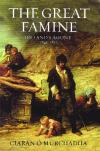 danger that this ‘micro’ approach would overly divert attention away from the ‘bigger picture’. Consequently, the publication of Ciarán Ó Murchadha’s The Great Famine: Ireland’s agony 1845–1852 (Continuum, 252pp, £20 hb, ISBN 9781847252173), a fresh, synthetic history that builds on the many excellent local histories, is timely. The book concludes by offering explanations as to why a catastrophe of medieval proportions was permitted to take place in a country ruled by the richest and most powerful country on earth. In today’s world of much improved productivity, transport and communications, we might ask the same question in relation to the catastrophe at present unfolding in the Horn of Africa.The poor, it seems, like death and taxes, will always be with us, and some of the ‘faminists’ mentioned above feature in Poverty and welfare in Ireland 1838–1948 (Irish Academic Press, 272pp, €24.95 pb, ISBN 9780716530909), a collection of essays edited by Virginia Crossman and Peter Gray, which traces the evolution of social welfare in nineteenth- and early twentieth-century Ireland.
danger that this ‘micro’ approach would overly divert attention away from the ‘bigger picture’. Consequently, the publication of Ciarán Ó Murchadha’s The Great Famine: Ireland’s agony 1845–1852 (Continuum, 252pp, £20 hb, ISBN 9781847252173), a fresh, synthetic history that builds on the many excellent local histories, is timely. The book concludes by offering explanations as to why a catastrophe of medieval proportions was permitted to take place in a country ruled by the richest and most powerful country on earth. In today’s world of much improved productivity, transport and communications, we might ask the same question in relation to the catastrophe at present unfolding in the Horn of Africa.The poor, it seems, like death and taxes, will always be with us, and some of the ‘faminists’ mentioned above feature in Poverty and welfare in Ireland 1838–1948 (Irish Academic Press, 272pp, €24.95 pb, ISBN 9780716530909), a collection of essays edited by Virginia Crossman and Peter Gray, which traces the evolution of social welfare in nineteenth- and early twentieth-century Ireland.
 Bookworm was rightly ticked off by Dermot Quinn (see ‘Letters’, p. 13) for stating that Cearbhall Ó Dálaigh was the only president of Ireland to resign from office: so too did Mary Robinson, in order to take up the post of United Nations High Commissioner for Refugees. If only Bookworm had consulted Kevin Kenna’s The lives and times of the presidents of Ireland (The Liffey Press, 250pp, €18.95/£17.95 pb, ISBN 9781905785841)! With a presidential election looming in a few weeks, this book offers a timely look back at the men and women who have served as our first citizen.Nowadays we take air travel for granted, and budget airlines such as Ryan Air—love them or loathe them—have made it accessible to a mass market. But as Mike Cronin outlines in Doesn’t time fly? Aer Lingus—its history (The Collins Press, 240pp, €25/£22.99 hb, ISBN 9781848891111), to mark the 75th anniversary of the national airline, air travel in its early days was for the well-heeled only, and the newly coined ‘air hostess’ conjured up an image of glamour. And the famous shamrock logo? That was the brainchild of the airline’s American general manager, Robert Logan, in 1938. He only stayed in the job
Bookworm was rightly ticked off by Dermot Quinn (see ‘Letters’, p. 13) for stating that Cearbhall Ó Dálaigh was the only president of Ireland to resign from office: so too did Mary Robinson, in order to take up the post of United Nations High Commissioner for Refugees. If only Bookworm had consulted Kevin Kenna’s The lives and times of the presidents of Ireland (The Liffey Press, 250pp, €18.95/£17.95 pb, ISBN 9781905785841)! With a presidential election looming in a few weeks, this book offers a timely look back at the men and women who have served as our first citizen.Nowadays we take air travel for granted, and budget airlines such as Ryan Air—love them or loathe them—have made it accessible to a mass market. But as Mike Cronin outlines in Doesn’t time fly? Aer Lingus—its history (The Collins Press, 240pp, €25/£22.99 hb, ISBN 9781848891111), to mark the 75th anniversary of the national airline, air travel in its early days was for the well-heeled only, and the newly coined ‘air hostess’ conjured up an image of glamour. And the famous shamrock logo? That was the brainchild of the airline’s American general manager, Robert Logan, in 1938. He only stayed in the job
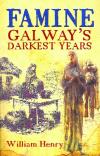 for a year but that was his lasting legacy.Since it was first published in 1988 the Directory of Irish archives, edited by Seamus Helferty and Raymond Refaussé, has been a ‘must-have’ for any serious researcher in Irish history, local or national. Now an updated (fifth) edition (Four Courts Press, 240pp, €45 hb, 9781846822452) has appeared, with entries for almost 270 repositories and organisations—educational, religious, cultural and governmental—with full addresses, phone and fax numbers, website and e-mail addresses. While the introduction acknowledges advances made since the last edition in 2003—the new Dublin City Library and Archive in Pearse Street, the new flagship premises for the Irish Architectural Archive in Merrion Square, the new purpose-built Cork City and County Archives—it pulls no punches in its condemnation of government policy (or rather lack of) in relation to archives. Not only has the National Archives Advisory Council been in abeyance for the last three years, but also we are still waiting for detailed elaboration of the ludicrous proposal to amalgamate the National Archives, National Library and Irish Manuscripts Commission, two years after it was first mooted.
for a year but that was his lasting legacy.Since it was first published in 1988 the Directory of Irish archives, edited by Seamus Helferty and Raymond Refaussé, has been a ‘must-have’ for any serious researcher in Irish history, local or national. Now an updated (fifth) edition (Four Courts Press, 240pp, €45 hb, 9781846822452) has appeared, with entries for almost 270 repositories and organisations—educational, religious, cultural and governmental—with full addresses, phone and fax numbers, website and e-mail addresses. While the introduction acknowledges advances made since the last edition in 2003—the new Dublin City Library and Archive in Pearse Street, the new flagship premises for the Irish Architectural Archive in Merrion Square, the new purpose-built Cork City and County Archives—it pulls no punches in its condemnation of government policy (or rather lack of) in relation to archives. Not only has the National Archives Advisory Council been in abeyance for the last three years, but also we are still waiting for detailed elaboration of the ludicrous proposal to amalgamate the National Archives, National Library and Irish Manuscripts Commission, two years after it was first mooted.
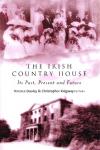 Books on the ‘big house’, particularly of the soft-focus, nostalgic, coffee-table variety, have never gone out of fashion. The Irish country house: its past, present and future, a collection of essays edited by Terence Dooley and Christopher Ridgway (Four Courts Press, 268pp, €55 hb, ISBN 9781846822346), is not of that superficial genre—although its numerous photographs, engravings and estate maps are of coffee-table high quality—but rather a wide-ranging and in-depth study not only of the buildings themselves but also of their social milieu.Moving from the country house to the town house (or rather houses), Andrew Hughes’s Lives less ordinary: Dublin’s Fitzwilliam Square 1798–1922 (The Liffey Press, 296pp, €19.95/£17.95 pb, ISBN 9781905785957) looks at the Georgian square’s scandals and scoundrels, writers, artists, soldiers and sailors, politicians and patriots, and, of course, its doctors—medical, academic and divine. The story starts in 1745 with the first duke of Leinster, James Fitzgerald, who, when asked why he was building his town house (Leinster House) in an unfashionable south-eastern suburb, supposedly remarked:
Books on the ‘big house’, particularly of the soft-focus, nostalgic, coffee-table variety, have never gone out of fashion. The Irish country house: its past, present and future, a collection of essays edited by Terence Dooley and Christopher Ridgway (Four Courts Press, 268pp, €55 hb, ISBN 9781846822346), is not of that superficial genre—although its numerous photographs, engravings and estate maps are of coffee-table high quality—but rather a wide-ranging and in-depth study not only of the buildings themselves but also of their social milieu.Moving from the country house to the town house (or rather houses), Andrew Hughes’s Lives less ordinary: Dublin’s Fitzwilliam Square 1798–1922 (The Liffey Press, 296pp, €19.95/£17.95 pb, ISBN 9781905785957) looks at the Georgian square’s scandals and scoundrels, writers, artists, soldiers and sailors, politicians and patriots, and, of course, its doctors—medical, academic and divine. The story starts in 1745 with the first duke of Leinster, James Fitzgerald, who, when asked why he was building his town house (Leinster House) in an unfashionable south-eastern suburb, supposedly remarked:
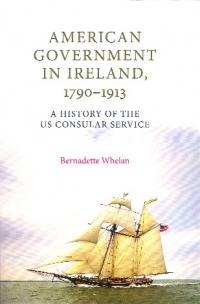 ‘Wherever I go, fashion will follow me’. Judging by the decline in sartorial standards evinced by some of its more recent occupants, that’s an open question! HI
‘Wherever I go, fashion will follow me’. Judging by the decline in sartorial standards evinced by some of its more recent occupants, that’s an open question! HI
















